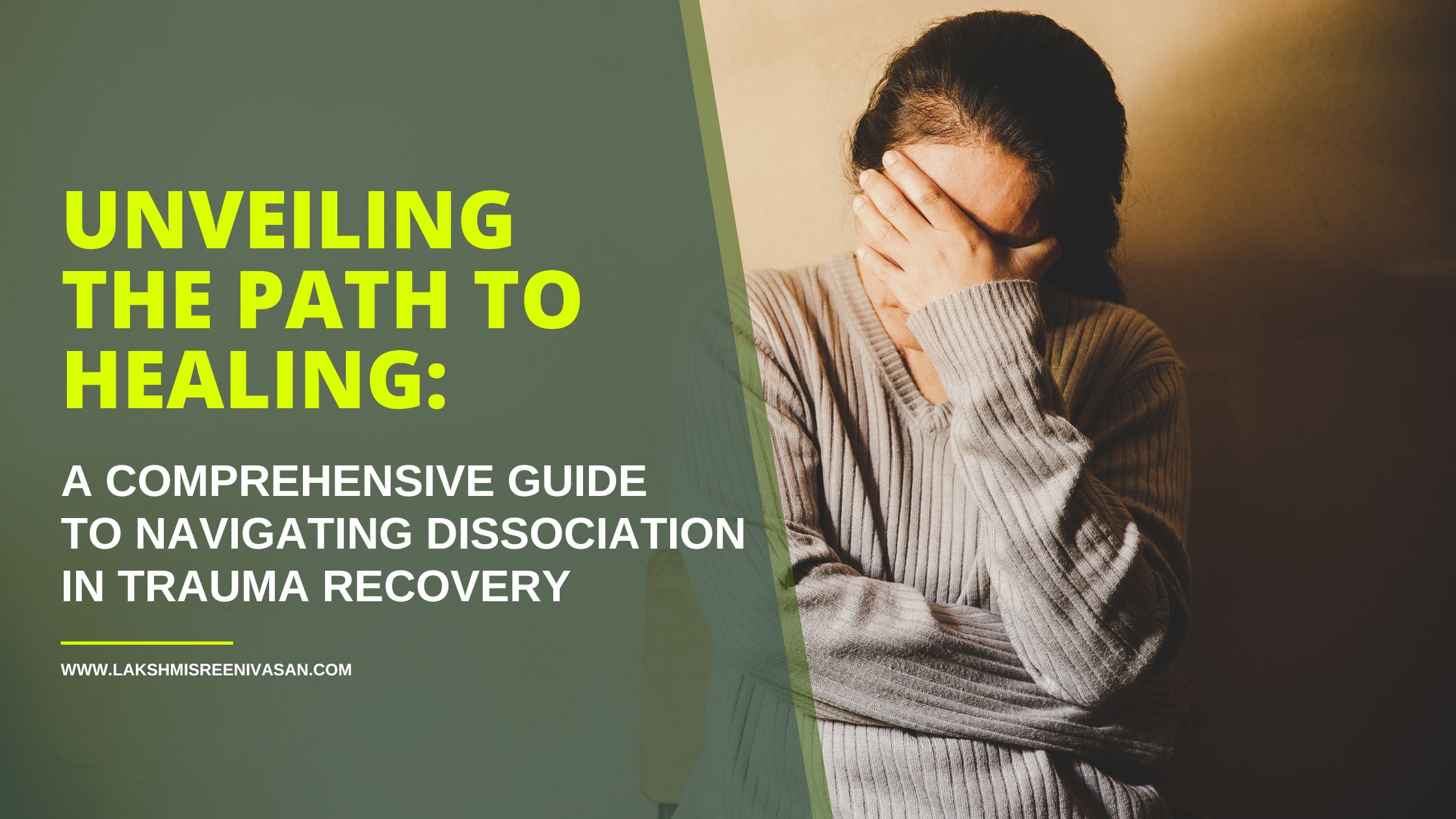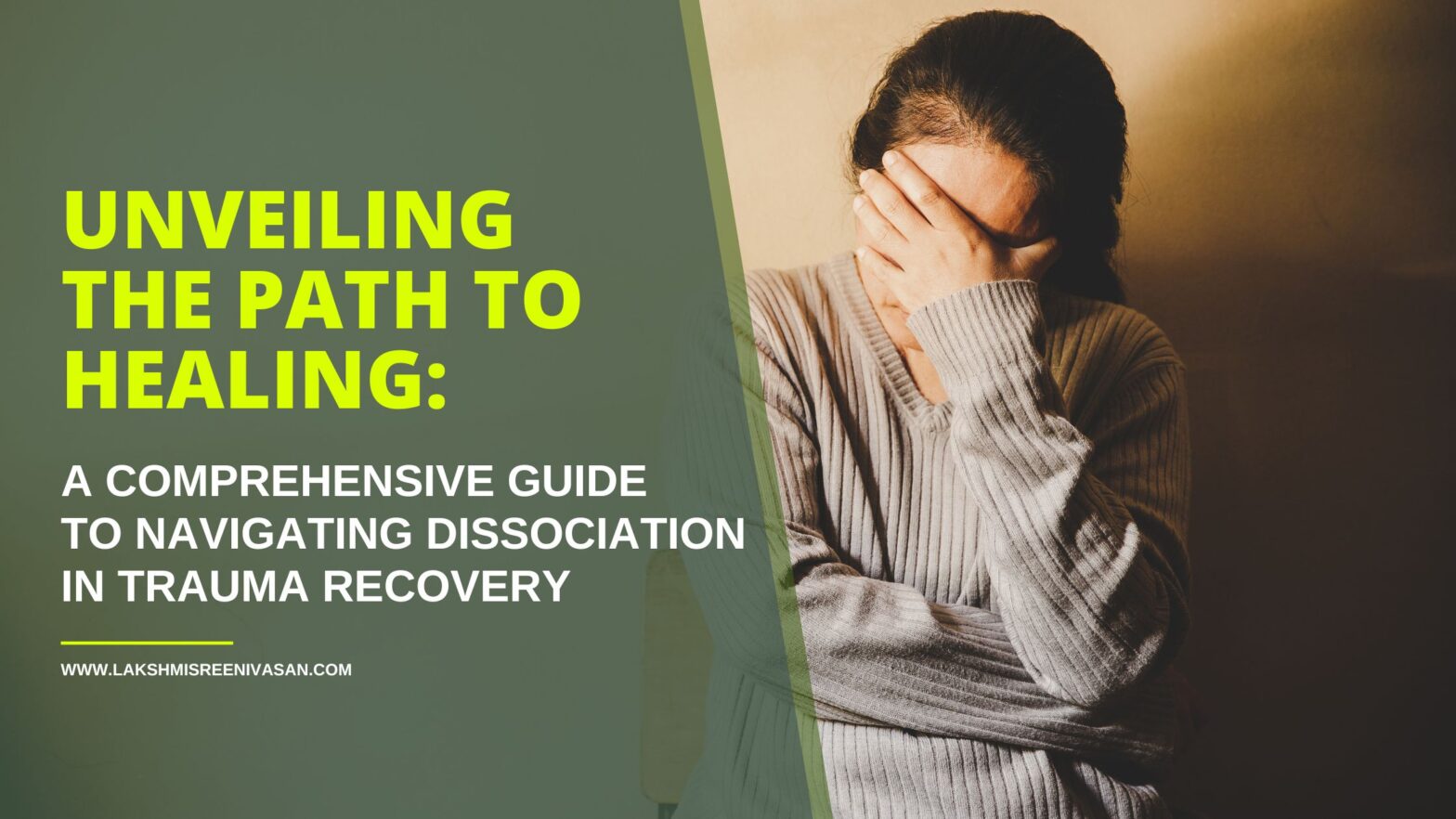
Trauma can be a shattering experience, leaving lasting imprints on both the mind and body. For those who have endured trauma, navigating the path to recovery can be a daunting journey. One of the intricate challenges that often arises in this process is dissociation. Dissociation is a coping mechanism that the brain employs to shield us from the overwhelming emotional and physical distress associated with traumatic experiences.
In this comprehensive guide, we will explore the intricate relationship between trauma and dissociation, understand the signs of dissociation, delve into when it becomes a disorder, and most importantly, discuss practical strategies for managing dissociation and facilitating healing.
Understanding the link between Trauma and Dissociation
- Trauma and Its Impact: Trauma, by definition, is an overwhelming emotional response to a horrific event. It can shake the very core of a person’s being and shatter their sense of safety and security. Trauma doesn’t discriminate; it can occur in response to various events, such as accidents, natural disasters, combat, or interpersonal violence.
- The Protective Mechanism of Dissociation: Dissociation plays a critical role in the body’s survival instinct during trauma. It is part of the fight-or-flight response, an involuntary mechanism that aims to protect us from threats or danger. When a traumatic event occurs, the nervous system activates this response to help us cope. However, if the situation becomes too overwhelming or dangerous, the body may resort to the freeze response.
- The Freeze Response: During the freeze response, dissociation can occur as a means of self-preservation. It involves disconnecting the brain from the body to endure the traumatic experience. This response is akin to a mouse “playing dead” when caught by a predator—it increases the chances of survival.
While dissociation serves as a survival strategy during the traumatic event, it can continue to manifest long after the trauma has ended, potentially causing disruptions in daily life. It may resurface when an individual encounters situations or stimuli reminiscent of the trauma, whether consciously or subconsciously.
Identifying Dissociation: Signs and Symptoms
Recognizing dissociation is crucial for individuals on their path to healing. The signs and symptoms of dissociation can vary from person to person, making it essential to understand what it feels like for you. Consulting a mental health professional can be instrumental in this process, as dissociation can often render individuals unaware of their condition.
Dissociation in Trauma Recovery, Signs and Symptoms:
- Feeling Disconnected: A sense of disconnection from one’s body or the world around them, often described as an “out-of-body experience.”
- Emotional Numbness: Experiencing emotional detachment or numbness, which can make it challenging to connect with one’s feelings or engage with emotions.
- Identity Confusion: A loss of identity or a struggle to define oneself and one’s role in the world.
- Memory Gaps: Forgetting specific events or personal information, particularly those related to the traumatic experience.
- Pain Insensitivity: Feeling little or no physical pain during dissociative episodes.
- Dissociative Identity: In some cases, dissociation can manifest as distinct and different identities, leading to a condition known as Dissociative Identity Disorder (DID).
It’s worth noting that while dissociation can be a common response to trauma, it doesn’t necessarily indicate a dissociative disorder. Understanding the severity, frequency, and impact of dissociation is crucial in determining whether it has become a disorder.
When Does Dissociation Become a Disorder?
While many individuals may experience dissociation, particularly in response to past trauma, it doesn’t always meet the criteria for a mental health disorder. Dissociative episodes can vary in duration, ranging from a few hours to weeks or even months. For some, dissociation might be a common coping mechanism from childhood that persists into adulthood, signaling a potential dissociative disorder.
Research has shown that dissociation can be present in nearly all psychiatric disorders, including anxiety disorders, panic disorder, and depression. Below are some mental health conditions commonly associated with dissociation:
Dissociative Disorders
- Depersonalization/Derealization Disorder (DPDR): This disorder involves feeling as though one is observing their own actions and thoughts from an external perspective, leading to a sense of detachment.
- Dissociative Identity Disorder (DID): DID is characterized by the presence of multiple distinct identities or personalities, often leading to a lack of control over one’s various parts.
- Dissociative Amnesia: This condition entails memory loss, often related to traumatic events. An individual may completely forget the trauma or block out reminders of it in their daily life.
Borderline Personality Disorder (BPD)
Dissociation is frequently a component of BPD, with many individuals having a history of early-life trauma.
Post-Traumatic Stress Disorder (PTSD) and Complex PTSD
Both PTSD and Complex PTSD often involve dissociation as a response to trauma-related triggers, serving as a way to cope with the physical and emotional sensations tied to the traumatic experience.
The Journey to Healing from Trauma-Related Dissociation
Healing from trauma and its associated dissociation is possible with the right support and strategies. The following steps can aid in the recovery process:
Acknowledgment and Acceptance
The first step in healing is acknowledging and accepting that dissociation is occurring. Recognizing when you are dissociating, even if it’s challenging, is essential. This awareness can empower you to take proactive steps to address dissociation and keep yourself safe.
Trauma-Focused Therapy
Working with a therapist who specializes in trauma is invaluable. Trauma-focused therapy equips individuals with coping skills to explore and process emotions and memories tied to the trauma. It also helps prevent retraumatization. Several therapeutic modalities are effective in trauma recovery, including:
- Psychodynamic Therapy
- Cognitive Behavioral Therapy (CBT), particularly Cognitive Processing Therapy
- Dialectical Behavior Therapy (DBT)
- Eye Movement Desensitization and Reprocessing (EMDR)
- Somatic Therapy
Support Groups
Sharing experiences with others who have endured trauma-related dissociation can be reassuring and enlightening. Besides this, participation in support groups brings a sense of belonging in the community.
Practical Strategies for Managing Dissociation
In addition to professional therapy, individuals can employ practical strategies to manage dissociation in their daily lives:
Grounding Techniques
Grounding involves connecting with the present moment and surroundings. Methods include:
- Sensory Awareness: Pay attention to sensations like touch, taste, smell, and sound.
- Object Description: Describe a familiar object in detail, focusing on its properties.
- Mathematics: Engage in mental math exercises, such as counting backward by specific numbers.
- Naming: List countries or identify objects with specific characteristics in your surroundings.
Mindfulness
Practicing mindfulness can help individuals remain present and reduce dissociation’s grip on their minds. One simple technique is focusing on the breath, inhaling and exhaling mindfully.
Breathing Routines
Deep breathing exercises can deescalate severe moments of dissociation that lead to anxiety or stress. These exercises help calm the fight-or-flight response, making it less likely for dissociation to occur.
Seeking Help and Support
Remember, you are never alone in your journey to heal from trauma-related dissociation. Many individuals have walked this path and can offer guidance and support. Seeking professional help from a therapist who understands trauma is a crucial step. Additionally, support groups and resources from reputable organizations can provide further assistance.
Recommended Reading for Deeper Understanding
If you’re interested in delving deeper into the topic of trauma and dissociation, consider exploring these books:
“The Body Keeps the Score” by Bessel van der Kolk, MD
“Healing the Fragmented Selves of Trauma Survivors: Overcoming Internal Self-Alienation” by Janina Fisher, PhD
“Trauma and Recovery” by Judith Lewis Herman, MD
“The Complex PTSD Workbook” by Arielle Schwartz, PhD
“Trauma and the Body” by Pat Ogden, PhD
“What Happened to You? Conversations on Trauma, Resilience, and Healing” by Bruce D. Perry, MD, PhD, and Oprah Winfrey
In conclusion, navigating dissociation in trauma recovery is a challenging but conquerable task. Understanding the relationship between trauma and dissociation, identifying the signs, and seeking professional help are crucial steps toward healing. With the right strategies and support, individuals can regain control over their lives and embark on a journey of recovery, resilience, and growth. Remember that you are not alone, and there is hope for a brighter future beyond the shadows of trauma.

